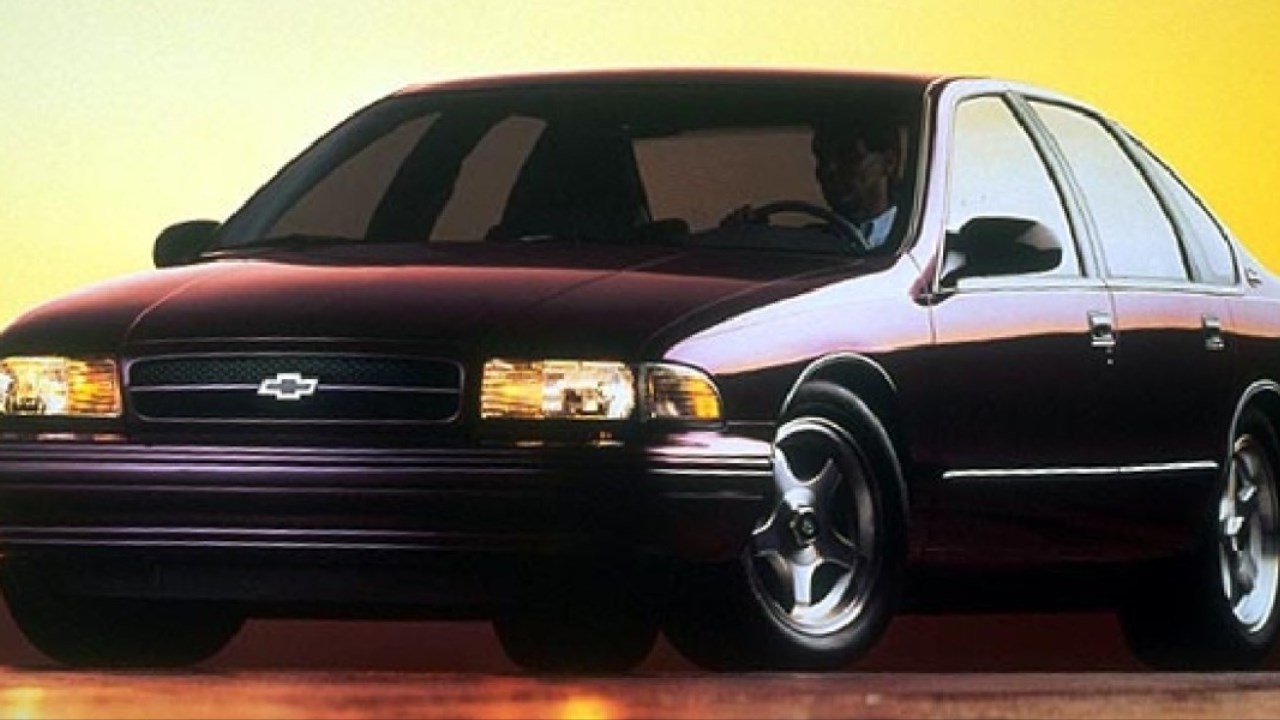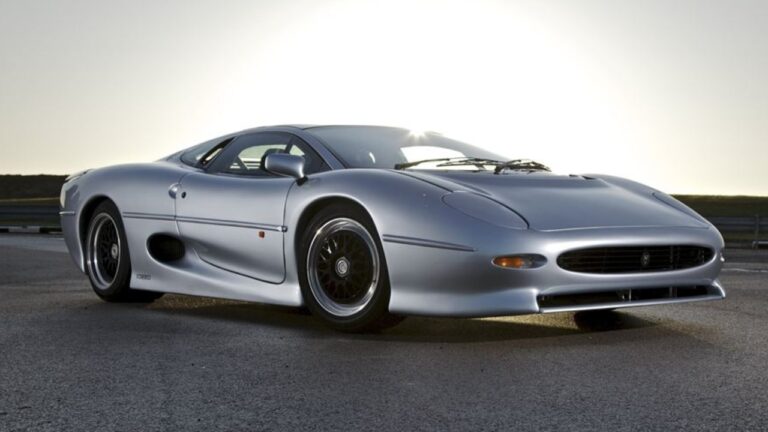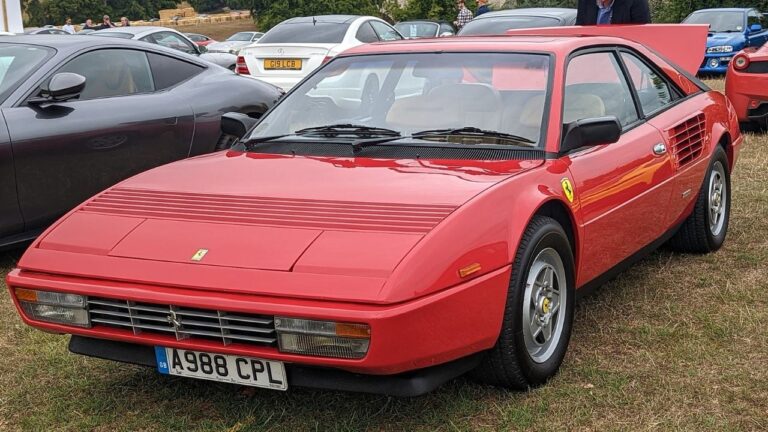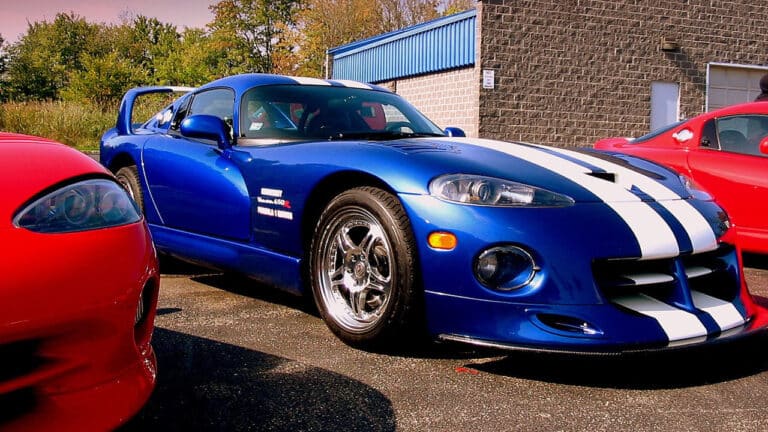13 Misunderstood Muscle Cars

Muscle cars make up the fabric of the American automotive scene. They are synonymous with the country, have some of the most loved and famous vehicles around the globe, and have a dedicated culture all of their own.
Remarkably, some muscle cars are often misunderstood. This is usually due to several reasons, such as a lack of production numbers, misconceptions when they were new, or a simple lack of appreciation for just how good they are.
While it was a tough ask, we’ve included 13 misunderstood muscle cars based on the above criteria. Some might seem like obvious additions, but others might surprise you.
1987 Buick GNX

Including the 1987 Buick GNX might seem an odd choice for some. Some felt that the GNX was a step too far for the Buick Regal, but the muscle car was about the model going out with one final bang.
It took it away from its roots with a V6 engine, but the 3.8-liter V6 under the hood officially produced 276-hp and 360 lb-ft of torque. There have been claims for years that this was a conservative estimate from Buick, with it well known that the muscle car could produce 300-hp+, making it an absolute monster.
1980 Ford Mustang McLaren M81

The 1980 Mustang McLaren M81 is one of the most misunderstood muscle cars on the planet, primarily because so few were produced. The two companies only ever built ten examples.
The Mustang McLaren M81 came about thanks to a partnership between Ford and McLaren Engines, the U.S. engine division of the famous British F1 team. They stripped down and tuned the 2.3-liter turbocharged engine, which now produced 174-hp, a respectable figure in an era when the gasoline crisis of the 1970s hurt muscle cars. These are now precious muscle cars, with one selling at Mecum in 2023 for $75,000.
1989 Pontiac Firebird Turbo Trans Am

It would be fair to say some muscle cars of the 1980s were a mixed bag. Some, like the 1982 Chevrolet Camaro, were major letdowns, yet others stole the limelight. The 1989 Pontiac Firebird Turbo Trans Am was a rare delight, showing that muscle cars still had some kick in them after the challenging period of the 1970s.
Incredibly, Pontiac produced just 1,555 of these Firebird Turbos, and it is arguably the best-turbocharged muscle car ever made. Power for the Pontiac came from its 3.8-liter turbocharged V6, which produced 245-hp, the same as the 1989 Chevrolet C4 Corvette. Some believe that the muscle car could make closer to 300-hp.
1969 Ford Torino Talledega

Think of the Ford Torino Talladega as the precursor to the Plymouth Superbird and Dodge Charger Daytona. In the late 1960s, Ford sought a competitive advantage over its rivals in NASCAR. Thus, they developed the Torino Talladega, a more aerodynamic car than the standard Torino.
Under the hood, it had a 428 ci Cobra Jet V8 engine producing 355-hp and 440 lb-ft of torque. The Talladega proved a significant success for Ford. It went on to win 29 races, the Manufacturer’s Cup, and the season championship in David Pearson’s hands. At the time, it was one of the most successful cars in NASCAR’s history.
1968 Pontiac Firebird Ram Air II

In 1968, Pontiac was having a tough time against the competition. Rivals such as the Chevrolet Chevelle SS 396 and the Dodges of the day were taking away much of its glory, so in response, Pontiac introduced the Firebird Ram Air II.
This was an option on all 400 ci Ram Air Firebirds, and to make more power, the D-port cylinder heads now had round exhaust ports. Pontiac also increased the compression and cam timing to create a car that could dominate the NHRA stock classes. It is a scarce muscle car, and according to Motor Trend, less than 100 had a four-speed transmission, and less than 10 had the factory 4.33:1 gear ratio.
1993 GMC Typhoon

The 1993 GMC Typhoon is often misunderstood because, to many, it looks like just any other compact SUV. However, the 1993 Typhoon was so much more than that. It was a muscle car with an SUV body that GMC used to continue its success with the earlier GMC Syclone pickup truck.
The Typhoon is an underrated performance car. Its turbocharged 4.3-liter GM LB4 engine produces 280-hp and 360 lb-ft of torque. The Typhoon was exceptional, able to run from 0 to 60 mph in just 5.3 seconds. Only 4,697 were produced, so owning one puts you in a very exclusive club.
1962 Pontiac Catalina 389 Tri-Power Four-Speed Convertible

While the name of this muscle car might be a mouthful, that was soon forgotten once you got behind the wheel of it; in the early 1960s, Pontiac had plenty of big engines, such as its 389 ci V8, but it didn’t have the GTOs to put them in. So, it put them into some of their full-size cars, creating the Catalina 389 Tri-Power Four-Speed Convertible.
Tri-Power was GM’s name for three two-barrel carburetors with a 389-cubic-inch V8 and 10.8:1 compression. This engine was good enough to provide the Catalina 389 with 318-hp and 430 lb-ft of torque.
1972 AMC Gremlin X

The standard AMC Gremlin never proved to be one of the most popular cars on the market. However, AMC was undoubtedly able to spice it up with the 1972 Gremlin X, which was marketed as a fun and affordable car by the brand that could compete with the Ford Pinto and Chevrolet Vega. In the 1970s, the original price for the Gremlin X was around $3,200.
Under the hood of the Gremlin X was a large 5.0-liter V8 with 150-hp and 245 lb-ft of torque. That isn’t masses of power from a big V8, but the car did weigh just 2,853 lbs, which is incredibly light compared to many modern vehicles. The Gremlin X is an odd-looking car with tons of personality.
1966-1969 Yenko Stinger

We would easily forgive you if you haven’t heard of the 1966 Yenko Stinger, as it is undoubtedly one of the more obscure muscle cars on this list. According to Hemmings, Yenko produced roughly 115 Stingers between 1966 and 1969, with 100 of those coming in 1966.
Thanks to its lightweight unibody platform, Don Yenko saw the possibilities with the air-cooled six-cylinder Chevrolet Corvair. Yenko modified the suspension, offered four stages of engine tuning, and added blue stripes to produce a car with a turbocharged 2.7-liter flat-six producing up to 240-hp. This was designed specifically for the Stage IV tuning level race track.
1994-1996 Chevrolet Impala SS

At first glance, the 1994-1996 Chevy Impala SS looks nothing special. It seems like quite an average sedan, albeit a stylish one. Yet when Chevrolet resurrected the legendary SS name at the 1992 Detroit Auto Show and slapped it onto the Impala, they created perhaps the best sleeper car of the 1990s.
The Bow Tie shoved a mighty 5.7-liter Corvette V8 under the hood, retuned to produce 260 hp and 330 lb-ft of torque. While that was slightly down from the 300 hp Corvette, the Impala SS proved to be a winner. Its lower ride height and all-season tires provided incredible grip, and despite its size, the Impala SS proved to be agile and nimble in the corners.
1969 Chevrolet Kingswood 427

Looking at a 1969 Chevrolet Kingswood 427, you might wonder what on earth it is doing on this list. But that is precisely why this muscle car is understood. This 1969 family wagon was more like a Chevrolet Camaro, as under the hood, it packed the massive 427 ci Turbo Jet V8 engine more commonly associated with muscle, sports, and performance.
The 427 ci V8 produced 390 hp, and the Kingswood 427 also had a four-speed manual transmission. To put that power into context, it is around 200 hp more than some Chevrolet Camaros of the early 1980s. The Chevrolet Kingswood 427 is an exceptionally deceiving sleeper car with which you can surprise your friends.
1977 Pontiac Can Am

In 1977, this one-year-only Pontiac Can Am was the top-of-the-range, special edition option package for the year Pontiac LeMans coupe. Aside from the orange stripes and flashier design, under the hood, the Can-Am packed the 6.6-liter Pontiac V8 that produced 200 hp and 325 lb-ft of torque, while those in California had a little less at 185-hp.
A variety of features helped to set it apart from the standard LeMans. A shaker-style hood scoop and unique rear spoiler were two of those, and production only stopped because the mold used to make the fiberglass rear spoiler broke. That is certainly not your usual reason for pulling a car from production.
Jensen Interceptor

At first glance, you might ask, “isn’t the Jensen Interceptor just a British sports car?” Usually, you would be right. However, the Interceptor is, in fact, a very American muscle car, thanks to Jensen’s use of the Chrysler low-deck and high-deck big-block V8s and the small-block LA V8 powertrain.
The Interceptor had enough power to take on the best of what America had to offer. You had the classic design of a British GT car yet the brawn and muscular qualities of a Ford Mustang. Thanks to the 440 ci V8 engine, the special Jensen SP could produce 330-hp, proving that it was more than just another grand tourer.





